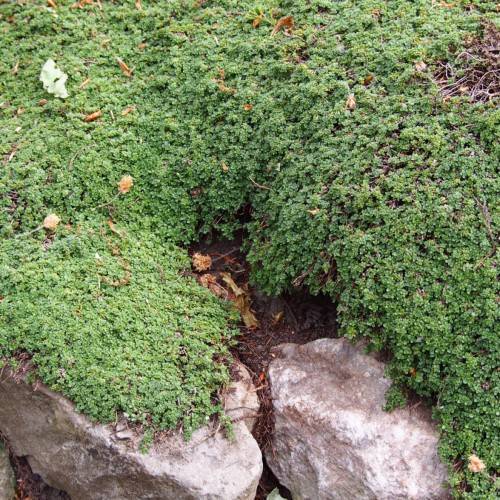
lemon thyme
Thymus serpyllum 'Pygmaeus'
Also Known As - creeping thymeCycle:
Herbaceous Perennial
Watering:
Minimum
Hardiness Zone:
4 - 8
Flowers:
Flowers In Summer
Sun:
Full sun
Soil:
Well-drained
Fruits:
Fruits Ready In Summer
Leaf:
Yes
Growth Rate:
Low
Maintenance:
Low
Drought Tolerant:
Yes
Care Level:
Medium
watering
Lemon thyme (Thymus serpyllum 'Pygmaeus') is an herbaceous perennial shrub that prefers a dry climate and does best in full sun. It's important to give lemon thyme the right amount of water. The soil should be kept slightly moist but not waterlogged. Water your thyme every 7-10 days during the summer when the weather is hot and dry. Aim to add enough water so that the top inch of soil is moist. Water less frequently in autumn and winter when growth is slower; in these seasons, wait until the top inch of soil is dry before watering again. Lemon thyme is sensitive to overwatering, so be sure not to water too often or give too much water at once.
sunlight
Lemon thyme (Thymus serpyllum 'Pygmaeus') is a small perennial herb that tolerates light shade but grows best in full sun. It needs 6 to 8 hours of direct sunlight per day for optimal growth. Plant Lemon thyme in a location that gets morning sun and afternoon shade. In hotter climates, it is best to provide more shade. In milder climates, the plant can withstand full sun. The direct sun may also help bring out the lemon scent in the leaves.
pruning
Lemon thyme (Thymus serpyllum 'Pygmaeus') should be pruned in spring or summer when new growth begins to appear. Pruning should be done to promote full and bushy growth and to remove any dead or damaged branches or stems. The plant can be trimmed back by up to 1-third of its length. This will ensure that the plant stays healthy and does not become overgrown. The leaves can also be pinched back to encourage bushy growth. Pruning should be light and should not be done too often as it can reduce flowering and can also damage the plant.
